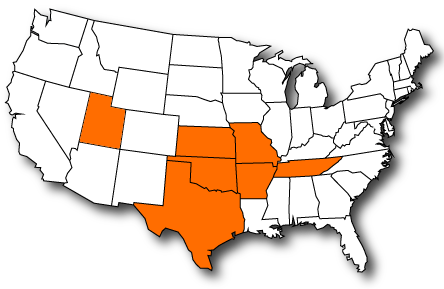In a world where extreme weather events are becoming increasingly common and the risks of water-related damage are on the rise, understanding the differences between flood insurance and water damage coverage is paramount. Both concepts are essential for safeguarding property and financial well-being, yet they address distinct aspects of water-related risks. This article delves into the nuances of flood insurance and water damage coverage, examining their definitions, coverage scopes, key considerations, and the importance of their integration in a comprehensive risk management strategy.
Defining Flood Insurance and Water Damage Coverage
Flood Insurance: Flood insurance is a specialized type of coverage that specifically protects against damage caused by flooding, which occurs when water inundates typically dry land. This inundation can result from heavy rainfall, overflowing rivers, storm surges, rapid snowmelt, or other natural events. Standard homeowners’ insurance policies typically do not cover flood damage, and as such, flood insurance becomes crucial for those living in flood-prone areas.
Flood insurance usually comes in two forms: National Flood Insurance Program (NFIP) policies provided by the Federal Emergency Management Agency (FEMA) and private flood insurance policies offered by private insurers. NFIP policies are available to communities that participate in the program and offer both building and contents coverage, providing financial protection against damage to the structure and its contents.
Water Damage Coverage: Water damage coverage, on the other hand, is a broader term that encompasses protection against various types of water-related damage that may occur within a property. This can include damage caused by burst pipes, leaking roofs, appliance malfunctions, and other non-flood-related water incidents. Water damage coverage is typically included in standard homeowners’ insurance policies, although the extent of coverage can vary widely based on the policy terms and the insurance provider.
Coverage Scopes and Nuances
Flood Insurance: Flood insurance is designed to address the specific risks associated with flooding. It covers damage to the structure itself, such as the foundation, walls, floors, and electrical and plumbing systems. Additionally, it can also cover damage to certain essential appliances like water heaters and furnaces. NFIP policies offer building coverage up to a certain limit, which varies depending on the policy type. Contents coverage can also be added to the policy, protecting personal belongings such as furniture, electronics, and clothing.
Water Damage Coverage: Water damage coverage, provided by homeowners’ insurance policies, primarily addresses damage caused by sudden and accidental water incidents that are not classified as flooding. This can include scenarios like pipe bursts, roof leaks, and appliance malfunctions that lead to water damage within the structure. However, water damage coverage might not cover gradual water seepage or long-term issues that could have been prevented through regular maintenance.
Key Considerations and Factors
Geographic Location: The most fundamental factor to consider when evaluating flood insurance and water damage coverage is the geographic location of the property. Properties situated in flood-prone areas or regions with a high risk of natural disasters like hurricanes and heavy rainfall necessitate robust flood insurance. Even areas not traditionally prone to flooding can still experience water-related incidents, highlighting the importance of comprehensive water damage coverage.
Policy Limits and Exclusions: It’s essential to thoroughly review policy limits and exclusions for both flood insurance and water damage coverage. Understand the maximum payout each policy offers and the specific scenarios that are excluded from coverage. This awareness can prevent surprises and ensure you’re adequately protected.
Cost and Affordability: Cost is a significant consideration when choosing between flood insurance and water damage coverage. Flood insurance premiums can be influenced by factors such as the property’s location, elevation, construction type, and flood zone classification. Water damage coverage is typically included in standard homeowners’ insurance policies, but the overall cost of the policy can vary based on coverage limits, deductible choices, and other factors.
Risk Mitigation and Prevention: Both flood insurance and water damage coverage underscore the importance of risk mitigation and prevention. Implementing measures to minimize water-related risks, such as elevating the property, installing flood barriers, maintaining proper drainage systems, and conducting regular property inspections, can not only lower insurance costs but also provide peace of mind.
Integrated Protection Strategy
Opting for an integrated protection strategy that combines flood insurance and water damage coverage can provide a comprehensive safety net against various water-related risks. This approach recognizes that water-related damages can arise from both flooding and non-flood incidents, and having tailored coverage for each scenario is vital.
For properties in flood-prone regions, NFIP flood insurance can serve as the foundation of protection against catastrophic flooding events. Supplementing this with private flood insurance can extend coverage limits and provide additional features that might not be available through NFIP policies. Additionally, ensuring that homeowners’ insurance policies include comprehensive water damage coverage ensures that other water-related incidents, which may not qualify as floods, are also addressed.
Conclusion
In a world where the threat of water-related damages looms larger due to climate change and unpredictable weather patterns, understanding the nuances of flood insurance and water damage coverage is crucial. Flood insurance provides specialized protection against flooding events, while water damage coverage addresses various non-flood water incidents. Both types of coverage are essential for safeguarding property and financial well-being, and an integrated approach that combines these two aspects offers a comprehensive solution to mitigate water-related risks. When evaluating insurance options, individuals must consider their geographic location, policy limits, cost, and risk mitigation strategies to create a balanced and effective risk management plan that protects against the unpredictable forces of nature.
Call G&G Independent Insurance today to get your home, car, and business protected from floods and water damage!


